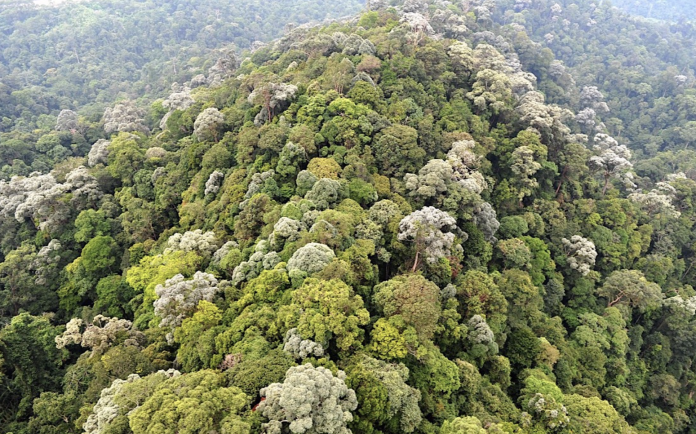KUALA LUMPUR, Oct 8 — The Southeast Asian rainforests, particularly the a seasonal area like Malaysia and Indonesia are hotspots for biodiversity and this region received high annual rainfall without a clear dry season.
Nevertheless, it has been reported that the effects of drought will increase in this area due to climate change, and there are concerns about the impact on the plants growing in the forest. One of the dominant tree families in this area is the Dipterocarpaceae.
Dipterocarpaceae is the most important timber family in Southeast Asia. The family consists of around 500 species but many have been listed as endangered or vulnerable due to the increasing demand for their timber.
Hence, in order to ensure conservation and sustainable utilisation, and to understand on how this timber family adapt to climate change, Dr. Kevin Ng Kit Siong and Dr. Lee Soon Leong from Forest Research Institute Malaysia (FRIM), Prof. Dr. Kentaro Shimizu from University of Zurich, Switzerland, Dr. Masaki Kobayashi from Japan International Research Center for Agricultural Sciences (JIRCAS), Dr. Jeffrey A. Fawcett from RIKEN iTHEMS, Japan, Dr. Tomoaki Nishiyama from Kanazawa University, Japan and other international scientists sequenced the genome of dipterocarp species for the first time based on Shorea leprosula, or locally known as Meranti Tembaga.
An article entitled, “The genome of Shorea leprosula (Dipterocarpaceae) highlights the ecological relevance of drought in aseasonal tropical rainforests” will be published in the Nature Portfolio journal, Communications Biology (https://doi.org/10.1038/s42003-021-02682-1 on 7 October 2021, 5:00 pm Malaysia time).
This analysis of the Asian dipterocarp genome revealed ~340 mega bases in length with ~44,000 genes (almost twice the number of genes found in humans). The team also revealed an ancient whole genome duplication (WGD) event that is estimated to be close to the Cretaceous-Paleogene (K-Pg) mass extinction event ~70 million years ago.
Further analysis of the genome showed that the retention of drought-related duplicated genes is a common feature among the dipterocarp species, which might have allowed the ancestral dipterocarp species to develop tolerance to harsh environments during the mass extinction period.
This has led to an important fundamental question asked by the team: Why is preferential retention of drought-related duplicated genes so important among the Asian dipterocarps in the Southeast Asia region even though the region receives high annual rainfalls?
“After the period around the WGD event,” the team explained, “paleoclimate studies suggest that Asian dipterocarps lived in climates with dry seasons, which might have contributed to the retention of the WGD-derived drought-related genes.”
“In the present-day condition, a seasonal tropics in Southeast Asia receive high annual rainfalls but also suffer from occasional drought mostly due to the El Niño Southern Oscillations. Although such drought conditions rarely occur, the irregular drought may be the basis for the preferential retention of drought-related duplicated genes in the Asian dipterocarps of aseasonal tropics.”
Using drought treatment experiment, the team further confirmed with functional analysis that the retained drought-related duplicated genes in the Asian dipterocarp species tend to function in response to droughts.
As a result of this study, Dipterocarpaceae trees were shown to have a large number of drought-response genes. As climate change may exacerbate the effects of droughts in the tropical regions of Southeast Asia, the knowledge generated in this study can be used in the selection and breeding of drought-adaptable individuals in order to contribute to sustainable utilisation of dipterocarps and possibly be applied to the conservation of rainforests.
In addition, the lack of improved planting materials due to the long gestation cycle and limited knowledge of genetic information for any dipterocarps hinders the success of forest plantation in this region. The deciphered genome of Meranti Tembaga takes the dipterocarp research to another milestone.
Several hectares of planted Meranti Tembaga have been monitored and investigated in FRIM since 2014 (Figure 3).
This offers the possibility of understanding the association between genes and physical traits of interest, such as growth performance, wood properties, pest and drought resistance, which may be useful for forest plantation and the timber industry.
It is anticipated in the near future that a screening tool based on whole genome scanning can be performed to select high-quality planting materials with the desired traits before going to the planting site.



















